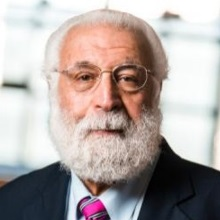Translational Studies of Obesity-Associated Hepatocellular Cancer
A special issue of Cancers (ISSN 2072-6694). This special issue belongs to the section "Cancer Pathophysiology".
Deadline for manuscript submissions: closed (31 March 2021) | Viewed by 13429
Special Issue Editors
Interests: energy balance; obesity cancer
Special Issues, Collections and Topics in MDPI journals
Special Issue Information
Dear Colleagues,
Hepatocellular Carcinoma (HCC) is the most prevalent form of primary liver cancer, and is among the leading causes of cancer-related deaths around the world. With a 5 year survival rate of less than 15%, HCC is etiologically associated with viral hepatitis, alcohol excess, other hepatotoxins, and metabolic disorders including obesity and type 2 diabetes mellitus (T2DM). While hepatitis and hepatotoxins remain significant causes of HCC, its increasing incidence in many countries is associated with expansion of the obesity pandemic. HCC has been designated an obesity-associated cancer, particularly in men. This Special Issue of Cancers will focus on translational aspects of obesity-associated HCC across the spectrum, from mechanisms and prevention to diagnosis and therapeutics. Articles are invited that study obesity-associated metabolic, immunologic, inflammatory, pathologic, microbiologic, genetic, and molecular alterations that impact obesity-associated HCC as well as their therapeutic implications.
Manuscripts will be accepted up to and including March 2021 for this Special Issue, which we plan to publish on 31 March 2021.
Prof. Dr. Nathan A. BergerDr. J. Mark Brown
Guest Editors
Manuscript Submission Information
Manuscripts should be submitted online at www.mdpi.com by registering and logging in to this website. Once you are registered, click here to go to the submission form. Manuscripts can be submitted until the deadline. All submissions that pass pre-check are peer-reviewed. Accepted papers will be published continuously in the journal (as soon as accepted) and will be listed together on the special issue website. Research articles, review articles as well as short communications are invited. For planned papers, a title and short abstract (about 100 words) can be sent to the Editorial Office for announcement on this website.
Submitted manuscripts should not have been published previously, nor be under consideration for publication elsewhere (except conference proceedings papers). All manuscripts are thoroughly refereed through a single-blind peer-review process. A guide for authors and other relevant information for submission of manuscripts is available on the Instructions for Authors page. Cancers is an international peer-reviewed open access semimonthly journal published by MDPI.
Please visit the Instructions for Authors page before submitting a manuscript. The Article Processing Charge (APC) for publication in this open access journal is 2900 CHF (Swiss Francs). Submitted papers should be well formatted and use good English. Authors may use MDPI's English editing service prior to publication or during author revisions.
Keywords
- hepatocellular cancer
- non-alcoholic fatty liver disease
- non-alcoholic steato hepatitis
- obesity







